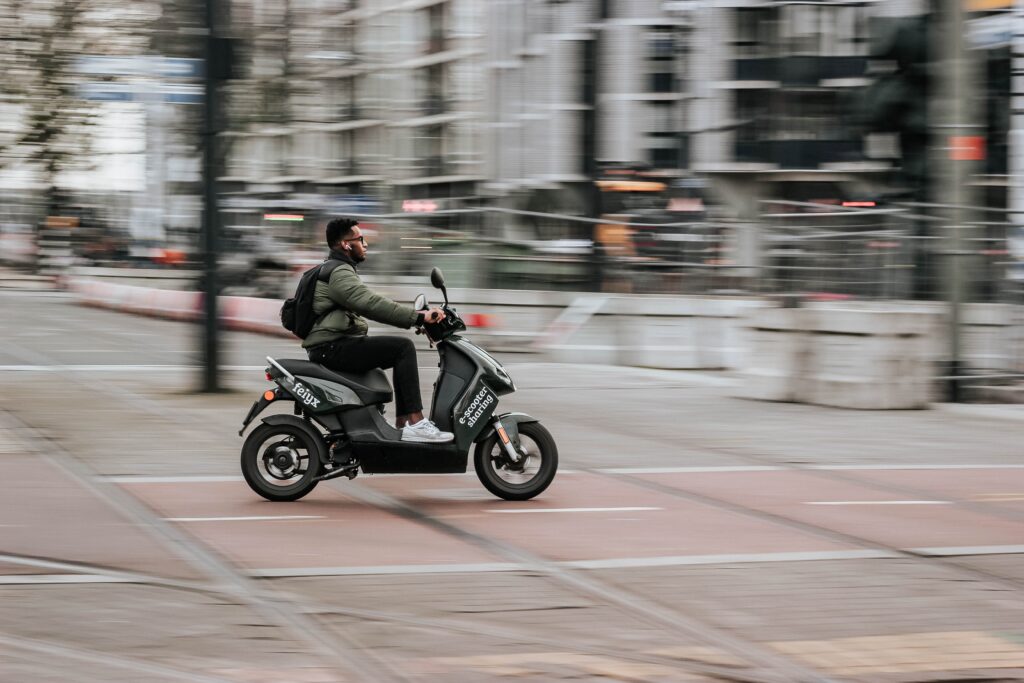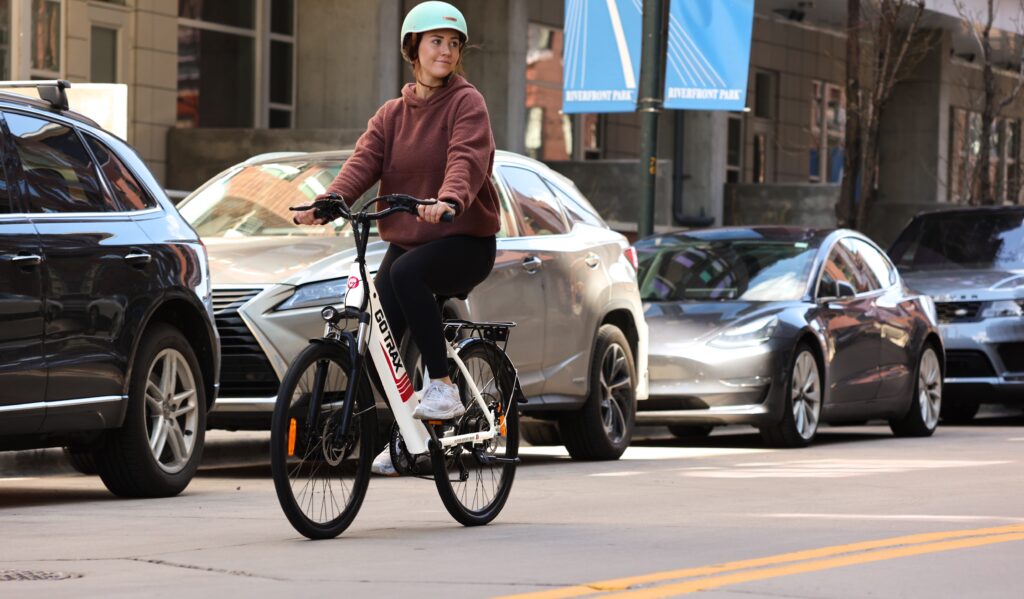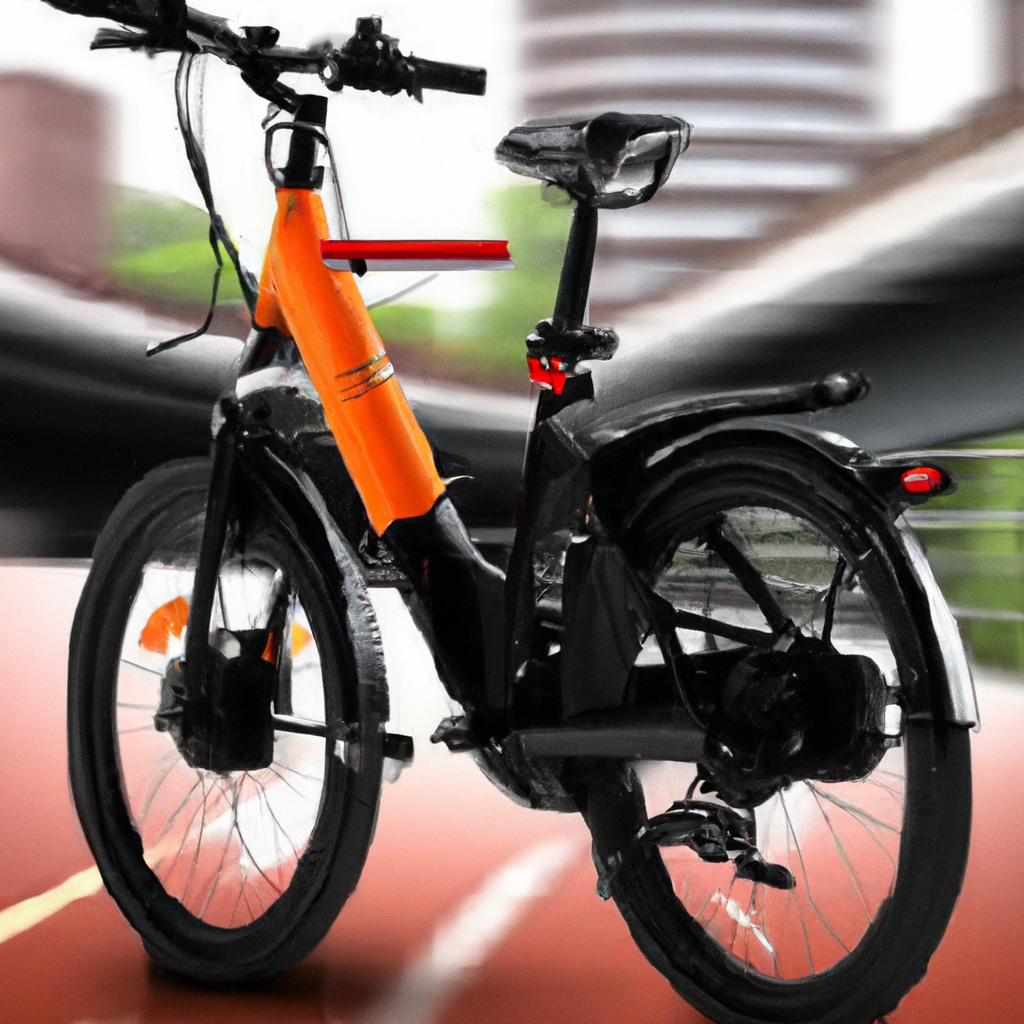Hey there, E-Bike enthusiasts! Are you an intermediate to advanced rider who is ready to take your e-bike commuting skills to the next level? If so, you’ve come to the right place! In this “Advanced E-Bike Riding Tips” section, we have everything you need to navigate the city streets with ease and confidence. From mastering advanced security measures to conquering those challenging uphill climbs, we are here to provide you with in-depth information and strategies that will help you get the most out of your e-bike commuting experience. So buckle up and get ready to explore the exciting world of advanced e-bike riding!

Choosing the Right E-Bike for City Riding
When it comes to city riding, choosing the right e-bike is crucial for a comfortable and efficient commuting experience. There are several factors to consider before making your purchase:
Considerations for City Riding
-
Size and Weight: It’s important to choose an e-bike that is the right size for you and fits your body proportions. Consider the weight of the bike as well, as you may need to carry it up stairs or onto public transportation.
-
Motor Power: City riding often requires quick acceleration and the ability to navigate through traffic. Look for e-bikes with powerful motors that offer high torque and speed.
-
Battery Range: Since you’ll be using your e-bike for commuting, pay close attention to the battery range. Choose a bike with a battery that can comfortably support your daily commute without needing frequent recharging.
-
Durability: City riding can be tough on bikes, with potholes, curbs, and unpredictable road conditions. Opt for an e-bike that is sturdy and built to withstand the challenges of urban environments.
Types of E-Bikes for City Riding
-
Hybrid E-Bikes: Hybrid e-bikes are a popular choice for city riding, as they offer a blend of comfort, versatility, and agility. These bikes are designed for both on-road and off-road use, making them suitable for city streets and bike paths.
-
Folding E-Bikes: If you have limited storage space or need to combine your e-bike commute with public transportation, a folding e-bike might be the perfect option for you. These bikes are compact and easy to carry, allowing you to take them on trains or store them in small apartments.
-
Cargo E-Bikes: For those who need to transport goods or carry heavy loads, cargo e-bikes are a great choice. These bikes have sturdy frames and large cargo racks, making them ideal for city riders who need to run errands or commute with a lot of gear.
-
Road E-Bikes: If you prioritize speed and efficiency, consider a road e-bike for city riding. These bikes have lightweight frames and narrower tires, allowing you to ride faster and navigate through traffic with ease.
Essential Equipment for City Riding
Before hitting the city streets on your e-bike, make sure you have the essential equipment to ensure your safety and comfort.
Helmet and Safety Gear
One of the most crucial pieces of equipment for any e-bike rider is a helmet. Choose a helmet that fits properly and meets safety standards. Additionally, consider investing in safety gear such as knee and elbow pads, as well as reflective clothing to improve visibility.
Bike Lights and Reflectors
Visibility is key when riding in the city, especially during low-light conditions. Equip your e-bike with front and rear lights, as well as reflectors on the wheels and pedals. This will not only improve your safety but also make you more visible to pedestrians and other vehicles.
Locks and Security Measures
City riding often involves leaving your e-bike unattended. Invest in a high-quality lock to secure your bike and deter theft. Look for a lock that is sturdy and difficult to break. Additionally, consider using anti-theft measures such as GPS tracking devices or bike alarms for added security.
Panniers and Storage Solutions
Carrying your belongings while riding in the city can be a challenge. Panniers are a great solution, as they attach to your e-bike and provide ample storage space. Look for panniers that are waterproof and durable, as they will protect your belongings from the elements.
Navigating Traffic and Road Safety
City riding can be intimidating, especially with heavy traffic and crowded streets. However, with the right knowledge and precautions, you can navigate the city safely and confidently.
Understanding Traffic Rules and Regulations
Before hitting the city streets, familiarize yourself with the local traffic rules and regulations. Know the hand signals, right-of-way rules, and any specific laws that apply to cyclists. This will help you ride safely and avoid accidents.
Tips for Riding in Busy City Streets
-
Be predictable: Signal your intentions clearly and ride predictably to help other road users anticipate your movements.
-
Stay visible: Make yourself visible to other road users by wearing bright clothing and using lights and reflectors.
-
Be aware of blind spots: Avoid riding in the blind spots of cars and large vehicles. Always assume that drivers may not see you.
-
Maintain a safe distance: Keep a safe distance from other vehicles to allow for sudden stops or lane changes.
-
Use bike lanes and paths when available: Take advantage of dedicated bike lanes and paths to separate yourself from vehicular traffic.
Sharing the Road with Pedestrians and Other Vehicles
City streets are filled with pedestrians and various types of vehicles. It’s important to share the road and be respectful of others. Slow down in crowded areas, give pedestrians the right of way, and always yield to larger vehicles.
Efficient Battery Management
Managing your e-bike’s battery is essential for a smooth and uninterrupted ride. Here are some tips to help you optimize your battery usage:
Understanding Battery Range and Capacity
Every e-bike has a specified battery range, which indicates how far it can travel on a single charge. Understanding your e-bike’s battery range is crucial for planning your commute and avoiding a dead battery. Keep in mind that factors such as terrain, rider weight, and assist level can affect the actual range.
Strategies for Extending Battery Life
-
Use lower assist levels: Lower assist levels consume less battery power, allowing you to extend your battery life.
-
Optimize your riding style: Smooth acceleration and maintaining a consistent speed can help conserve battery power.
-
Plan your routes wisely: Choose routes with less elevation and fewer stop-and-go situations to maximize your battery efficiency.
Charging Options for Commuters
To ensure you always have a charged battery, consider the following charging options:
-
Charging at home: Invest in a reliable charger and plug in your e-bike overnight or whenever it’s not in use.
-
Charging at work or public places: If your workplace or nearby public spaces offer charging stations, take advantage of them to top up your battery during the day.
-
Carrying a spare battery: If you have a long commute or anticipate needing extra battery power, consider carrying a spare battery with you.

Handling City Riding Challenges
City riding can present unique challenges, but with the right strategies, you can overcome them and enjoy your commute.
Dealing with Traffic Jams and Congestion
Gridlocked traffic can be frustrating, but as an e-bike rider, you have the advantage of maneuverability. Use bike lanes or filter through traffic when it’s safe and legal. Be vigilant, anticipate traffic movements, and always prioritize your safety.
Finding Safe and Efficient Bike Lanes
Bike lanes are a cyclist’s best friend in the city. Look for routes that have dedicated bike lanes or roads with lower traffic volumes. Familiarize yourself with bike lane markings and prioritize using them whenever possible.
Riding in Inclement Weather
Rain, snow, and strong winds can make city riding challenging. Here are some tips for riding in different weather conditions:
-
Rain: Wear waterproof clothing and ensure your e-bike’s lights are working properly for visibility. Take extra caution when braking, as wet roads can reduce stopping power.
-
Snow and ice: Avoid riding in snowy or icy conditions, as they can significantly reduce traction. If you must ride, consider using studded tires for better grip.
-
Strong winds: Ride defensively and be prepared for sudden gusts. Be cautious when passing large vehicles, as they can create wind tunnels.
Advanced Commuting Techniques
Once you’ve mastered the basics of city riding, it’s time to explore advanced techniques that can enhance your commuting experience.
Optimizing Speed and Efficiency
To optimize your speed and efficiency while commuting:
-
Use your e-bike’s different assist modes strategically. Higher assist levels can help you accelerate quickly, while lower levels can conserve battery power.
-
Keep an eye on your cadence (pedal revolutions per minute) and find a comfortable rhythm that allows you to maintain a steady pace.
-
Practice drafting behind other cyclists or vehicles to reduce wind resistance and conserve energy.
Using E-Bike Assist Modes Effectively
Most e-bikes come with multiple assist modes, such as eco, touring, and sport. Learn how each mode affects your riding experience and battery consumption. Use eco mode for long commutes, touring mode for hilly terrain, and sport mode when you need a boost in speed.
Mastering Cornering and Maneuvering in City Streets
City streets often require quick cornering and maneuvering around obstacles. Here’s how to navigate urban environments with agility:
-
Lean into turns while maintaining control of your bike. Practice leaning your body and bike together to maintain stability.
-
Slow down before entering turns and use your e-bike’s brakes and leaning techniques to navigate corners smoothly.
-
Be aware of your surroundings and anticipate potential hazards or obstacles in your path.

Safety and Self-Defense
While city riding can be enjoyable, it’s important to prioritize your safety and be prepared for unexpected situations.
Situational Awareness and Defensive Riding
Maintain constant situational awareness by scanning your surroundings regularly. Anticipate potential conflicts or hazards, such as opening car doors, pedestrians suddenly crossing, or vehicles making sudden turns. Defensive riding techniques, such as keeping a safe distance from vehicles and always being prepared to brake or swerve, are crucial for staying safe in the city.
Preventing Theft and Bike Complications
City streets can be magnets for bike theft, so take precautions to prevent theft and minimize the risk of bike complications:
-
Invest in a reliable lock and always secure your e-bike, even if you’re just leaving it for a few minutes.
-
Register your e-bike and consider using anti-theft GPS tracking devices to increase the chances of recovering your bike if it’s stolen.
-
Regularly check your e-bike’s components, such as tires, brakes, and lights, to ensure they’re in good working condition.
Self-Defense Techniques for Urban Cycling
While it’s rare, encountering aggressive individuals on the road can happen. In such situations, it’s important to stay calm and diffuse the situation. Avoid engaging in confrontations and, if necessary, seek help from bystanders or contact the authorities. Consider taking self-defense classes to boost your confidence and readiness to handle any potential threats.
Maintenance and Repairs for City Riding
Keeping your e-bike in top shape is crucial for a smooth and reliable commute. Regular maintenance and timely repairs can help extend the life of your e-bike and ensure it performs at its best.
Regular Maintenance Checklist
Adhere to a regular maintenance schedule to keep your e-bike in optimal condition:
-
Clean your e-bike regularly to remove dirt, debris, and road grime that can affect its performance.
-
Check the tire pressure and ensure they are properly inflated to the recommended PSI (pounds per square inch).
-
Inspect the brake pads to ensure they have sufficient thickness and replace them if they’re worn down.
-
Lubricate the bike chain and other moving parts to reduce friction and improve performance.
Troubleshooting Common E-Bike Issues
Being familiar with common e-bike issues can help you troubleshoot problems and avoid unnecessary trips to the repair shop:
-
Battery not charging: Check the connection between the charger and the battery. Ensure that both are working properly and that the charger is compatible with your e-bike.
-
Motor not engaging: Make sure the pedal-assist sensor is properly aligned and functioning. Check the motor connections to ensure they are secure.
-
Brakes not working properly: Check for any signs of wear or damage on the brake pads and rotors. Adjust or replace them as necessary.
Finding Reliable Repair Shops in the City
While regular maintenance can prevent many issues, sometimes you may need professional assistance. Research and find reliable e-bike repair shops in your city. Look for shops that have experience working with e-bikes and positive customer reviews. Establishing a good relationship with a trusted repair shop can save you time and hassle in the long run.

Ergonomics and Comfort
Riding in the city for extended periods can take a toll on your body, so it’s important to prioritize ergonomics and comfort to prevent discomfort and fatigue.
Choosing the Right Saddle and Handlebars
Select a saddle that fits your sit bones and provides sufficient padding for comfort. Consider handlebars that allow for a relaxed riding position and proper weight distribution. Experiment with different saddle and handlebar styles to find what works best for you.
Positioning for Optimal Comfort and Efficiency
Proper bike fit is essential for comfort and efficiency while riding. Ensure that your e-bike’s seat height, handlebar height, and reach are adjusted to your body proportions. A professional bike fit can help you achieve the optimal riding position and minimize strain on your body.
Evaluating Bike Fit and Adjustments
Periodically evaluate your e-bike’s fit and make adjustments as needed. Check for any discomfort or pain during rides, and make the necessary tweaks to improve your bike’s fit. Small adjustments can make a big difference in your overall riding experience.
Mastering Uphill Climbs in the City
City riding often includes uphill climbs, and knowing the right techniques can make these challenges more manageable.
Gear Shifting Techniques for Uphill Climbs
Before reaching the uphill section, anticipate the climb and adjust your gears accordingly. Shift to a lower gear to maintain a comfortable cadence and prevent straining your muscles. Keep your pedal stroke steady and aim for a consistent effort throughout the climb.
Maintaining Consistent Pedal Cadence
Maintaining a consistent pedal cadence is crucial for efficient uphill climbs. Find a cadence that feels comfortable for you and allows you to maintain a steady pace. Shifting to the appropriate gear and focusing on maintaining a smooth pedal stroke will help you conquer those uphill sections with ease.
Balancing Power and Battery Consumption on Inclines
When riding uphill on your e-bike, it’s important to balance your power output and battery consumption. Engage the appropriate assist mode that provides the right amount of power and support without draining your battery too quickly. Experiment with different assist levels to find the optimal balance for uphill climbs.
With these advanced strategies for city riding, you can take your e-bike commuting to the next level. Remember to always prioritize safety, maintain your e-bike properly, and enjoy the thrill of navigating through busy city streets. Happy riding!




